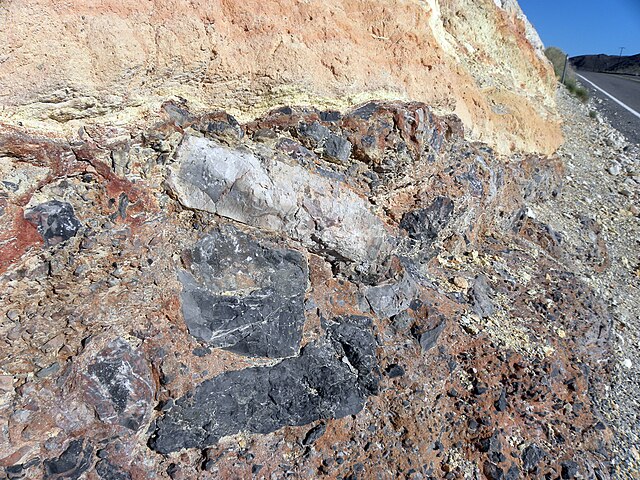Breccia is a rock composed of large angular broken fragments of minerals or rocks cemented together by a fine-grained matrix.
Basalt breccia in the Canary Islands; green groundmass is composed of epidote
Megabreccia (left) at Titus Canyon Narrows, Death Valley National Park, California
Tertiary breccia at Resting Springs Pass, Mojave Desert, California
Unusual breccia cemented by azurite and malachite, Morenci Mine, Arizona
Cementation involves ions carried in groundwater chemically precipitating to form new crystalline material between sedimentary grains. The new pore-filling minerals forms "bridges" between original sediment grains, thereby binding them together. In this way, sand becomes sandstone, and gravel becomes conglomerate or breccia. Cementation occurs as part of the diagenesis or lithification of sediments. Cementation occurs primarily below the water table regardless of sedimentary grain sizes present. Large volumes of pore water must pass through sediment pores for new mineral cements to crystallize and so millions of years are generally required to complete the cementation process. Common mineral cements include calcite, quartz, and silica phases like cristobalite, iron oxides, and clay minerals; other mineral cements also occur.
Calcite cement in an ooid-rich limestone; Carmel Formation, Jurassic of Utah





